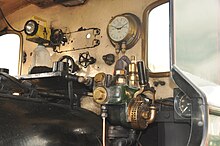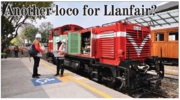- Joined
- 27 Jan 2008
- Messages
- 23,956
- Reaction score
- 2,718
- Location
- Llanfair Caereinion, Nr Welshpool
- Country

It seems local uses vacuum, but the engine rented uses pressure, told not permitted to use simple pnewvac can any one explain why?

Maybe spell check and grammar , can’t make head nor tale of your question.It seems local uses vacuum, but the engine rented uses pressure, told not permitted to use simple pnewvac can any one explain why?


 some method is required to produce the vacuum, however it seems the ejector is not permitted, they have to have a vacuum pump fitted, the exhauster the same things were used to suck up milk and empty grids on the road side, so I have seen these many times, a more sophisticated type was used with blowers where the paddles did not rub on the outer shell but were held off.
some method is required to produce the vacuum, however it seems the ejector is not permitted, they have to have a vacuum pump fitted, the exhauster the same things were used to suck up milk and empty grids on the road side, so I have seen these many times, a more sophisticated type was used with blowers where the paddles did not rub on the outer shell but were held off.I suspect there may have been a slight difference for the milk pumps.however it seems the ejector is not permitted, they have to have a vacuum pump fitted, the exhauster the same things were used to suck up milk
I can only guess that there could be so little demand for such units, that to get them certified for rail use would be untenable?but why are electric and air powered units not permitted
lovely locos but on diesel because off the way the field diverts kick in on any heavy gradient your stuck at around 28mph max as it kicks in and out dropping back to around 23mph before regrouping back to series very frustrating as if you could "hold " series you may get perhaps constant 35 mph indeed thumpers with the same engine would be perhaps 45mph at welcome bridge at the top off dorking bank [1 in 96]What versatile little locos the 73's are!
I've seen 73118 out many times near me, making some very unusual stock moves

But local line has a 16 MPH speed limit, so not really a problem with 2'6" gauge.lovely locos but on diesel because off the way the field diverts kick in on any heavy gradient your stuck at around 28mph max as it kicks in and out dropping back to around 23mph before regrouping back to series very frustrating as if you could "hold " series you may get perhaps constant 35 mph indeed thumpers with the same engine would be perhaps 45mph at welcome bridge at the top off dorking bank [1 in 96]
But local line has a 16 MPH speed limit, so not really a problem with 2'6" gauge.
ahh ok i dont know if the light railway act applies equally to narrow gauge as 4ft 8 i assume it does but i dont knowBut local line has a 16 MPH speed limit, so not really a problem with 2'6" gauge.

Lol. I see what you did there. Spelling and grammar. Is that the same as not making head nor tail? Comma's in the wrong place too. Just sayin'.Maybe spell check and grammar , can’t make head nor tale of your question.
LOL, I see what you did there. Apostrophe not needed lol.Comma's in the wrong place too.

